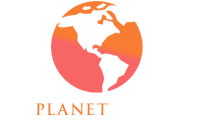Listing Details
The Chemical Software Market has emerged as a critical component of the chemical industry, enabling businesses to optimize processes, ensure regulatory compliance, and improve overall efficiency. With rapid advancements in artificial intelligence (AI), cloud computing, and data analytics, chemical companies are embracing digital solutions to manage complex workflows, automate laboratory operations, track hazardous materials, and streamline supply chains.
The industry is undergoing a significant transformation due to increasing regulatory pressure, sustainability initiatives, and the push for data-driven decision-making. As businesses seek to enhance productivity while reducing operational risks, chemical software solutions have become indispensable. This report provides a comprehensive analysis of the chemical software market, covering its market dynamics, size, product classifications, industry collaborations, emerging trends, and investment landscape from 2024 to 2025.
Market Overview and Growth Dynamics
Current Market Size and Future Growth
- Market Value in 2024: Estimated at USD 4.2 billion.
- Projected Market Value by 2028: Expected to reach approximately USD 6.5 billion.
- CAGR (2024-2028): Estimated at 8.1%, indicating strong demand for digital transformation in chemical industries.
Key Market Drivers
- Regulatory Compliance and Safety Management
- The chemical industry is governed by strict environmental, health, and safety regulations.
- Companies are investing in compliance software to ensure adherence to REACH, OSHA, and GHS guidelines.
- Rising Adoption of Digitalization in Chemical Manufacturing
- AI, IoT, and predictive analytics are helping manufacturers optimize production processes and reduce waste.
- Process simulation software enhances reaction modeling, improving efficiency and cost-effectiveness.
- Increased Demand for Laboratory Automation
- Research and development (R&D) labs require automated software solutions to manage data, experiments, and quality control.
- Laboratory Information Management Systems (LIMS) are becoming essential in drug development, materials science, and industrial testing.
- Supply Chain and Inventory Optimization
- The chemical industry involves complex logistics, raw material procurement, and inventory management.
- Cloud-based supply chain software is improving real-time tracking and reducing operational risks.
Challenges in the Market
- High Initial Costs – Implementing AI-driven chemical software solutions can be expensive, limiting accessibility for smaller businesses.
- Integration with Legacy Systems – Many companies rely on older IT infrastructure, making modernization a slow process.
- Cybersecurity Concerns – As digital adoption increases, so does the risk of data breaches, industrial espionage, and cyberattacks.
Product Types and Classifications in the Chemical Software Market
The chemical software market consists of various software types, catering to different operational, compliance, and analytical needs within the chemical industry.
1. By Application
- Chemical Process Simulation Software – Used for optimizing reaction kinetics, process modeling, and cost reduction in chemical manufacturing.
- Regulatory Compliance and Safety Management Software – Helps companies adhere to chemical safety laws and environmental guidelines.
- Laboratory Information Management Systems (LIMS) – Essential for automated data tracking, sample management, and quality control.
- Supply Chain and Inventory Management Software – Ensures efficient logistics, raw material tracking, and regulatory documentation.
- Enterprise Resource Planning (ERP) for Chemical Companies – Integrates finance, procurement, and operations management into one platform.
2. By Deployment Model
- On-Premise Software – Installed on company-owned servers, offering better security but requiring higher maintenance.
- Cloud-Based Software (SaaS) – Preferred for its scalability, cost-effectiveness, and real-time accessibility.
3. By End-User Industry
- Pharmaceutical and Biotechnology – Supports drug development, regulatory tracking, and lab automation.
- Oil & Gas and Petrochemicals – Used for pipeline monitoring, process automation, and hazard management.
- Agrochemicals and Specialty Chemicals – Enhances chemical formulation, testing, and supply chain logistics.
Industry Ecosystem and Collaborations
Key Industry Players and Stakeholders
- Software Developers – Innovate AI-driven chemical management platforms.
- Chemical Manufacturers – Use digital tools to enhance productivity and regulatory compliance.
- Regulatory Agencies – Set guidelines for safety, sustainability, and chemical management.
- Technology Providers – Offer cloud computing, cybersecurity, and blockchain-based solutions.
Notable Industry Collaborations
- Partnerships Between Chemical Companies and Software Firms – Focus on integrating smart chemical monitoring and predictive analytics.
- Investment in Sustainable Chemical Manufacturing – Companies are collaborating to develop eco-friendly and waste-minimizing software solutions.
- Expansion of Cloud and IoT Capabilities – Industries are moving toward cloud-based platforms for real-time tracking and decision-making.
Emerging Industry Trends (2024-2025)
1. AI and Machine Learning Integration
- AI-powered chemical software is improving predictive analytics, risk management, and process control.
2. Adoption of Cloud-Based Solutions
- SaaS-based platforms are becoming the standard for chemical inventory and compliance tracking.
3. Blockchain for Chemical Supply Chain Transparency
- Blockchain is being used to enhance security, track hazardous materials, and verify product authenticity.
4. Cybersecurity and Data Protection in Chemical IT Systems
- Investment in industrial cybersecurity solutions is rising due to increased digitalization risks.
Venture Capital and Private Equity Trends
Investment Trends in the Chemical Software Market
- Venture Capital Funding in AI-Powered Chemical Software
- Startups focusing on chemical modeling and automation are attracting investors.
- Private Equity in Cloud-Based Chemical Compliance Solutions
- SaaS companies specializing in chemical regulatory software are seeing increased funding.
- Mergers & Acquisitions in Chemical Software Innovation
- Large firms are acquiring specialized software companies to expand market share.
- Growth in Research & Development Investments
- Increased funding for smart manufacturing, IoT-enabled monitoring, and predictive maintenance software.
Conclusion
The chemical software market is undergoing a major transformation, driven by automation, regulatory compliance, and digital innovation. As industries embrace AI, cloud computing, and blockchain solutions, the demand for advanced chemical software tools continues to rise.
Gallery

Location
Contact Information
From Labs to AI: How Chemical Software is Transforming the Industry Landscape 0 reviews
Login to Write Your ReviewThere are no reviews yet.
Section
Business Hour
- Monday Closed
- Tuesday Closed
- Wednesday Closed
- Thursday Closed
- Friday Closed
- Saturday Closed
- Sunday Closed













